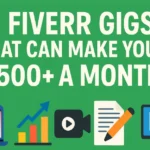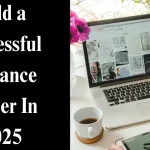As a freelancer, writing winning proposals is essential for your business’s success. A well-crafted proposal not only showcases your skills and expertise but also demonstrates your ability to understand and address the client’s needs. In 2023, competition in the freelance industry is expected to be more intense than ever before. Therefore, it is crucial to have an up-to-date strategy for writing proposals that stand out from the crowd. In this article, we will discuss the key elements that go into crafting a winning proposal.
Introduction
Before diving into the specifics of writing a winning proposal, let us first understand its importance. For freelancers, a winning proposal can make or break a deal. It is the first impression you make on a potential client, and it sets the tone for your entire relationship. Therefore, investing time and effort into crafting a winning proposal is crucial for your business’s success.
Having an up-to-date strategy for writing proposals is equally important. As the freelance industry continues to evolve, so do client expectations. In 2023, clients will be looking for proposals that are not only well-written and professional but also tailored to their specific needs. With an up-to-date strategy, you can ensure that your proposals are always on point and aligned with the latest industry trends.
1. Understanding the Client’s Needs
To write a winning proposal, you must first understand the client’s needs. This requires thorough research and a deep understanding of the client’s industry. Here are some key steps to keep in mind:
Researching the client and their industry: Before crafting a proposal, take the time to research the client and their industry. This will give you a better understanding of their pain points, challenges, and goals. Use this information to tailor your proposal to their specific needs.
Understanding the client’s specific needs and requirements: Once you have a good understanding of the client’s industry, dig deeper into their specific needs and requirements. This will help you craft a proposal that addresses their pain points and provides a tailored solution.
Addressing the client’s pain points in the proposal: Your proposal should address the client’s pain points and demonstrate how your proposed solution can solve them. This will show the client that you understand their needs and are the right person for the job.
2. Structuring Your Proposal
The structure of your proposal is just as important as its content. A well-structured proposal not only makes it easier for the client to read but also demonstrates your professionalism and attention to detail. Here are the key elements of a winning proposal:
Start with a strong introduction: Your introduction should grab the client’s attention and set the tone for the rest of the proposal. It should also include a brief overview of the proposed solution.
State your understanding of the client’s needs: Use this section to demonstrate that you understand the client’s pain points and requirements.
Outline your proposed solution and how it addresses the client’s needs: This is the meat of your proposal. Provide a detailed description of your proposed solution and how it addresses the client’s pain points. Use bullet points and visuals to make your proposal easy to read and understand.
Provide a clear breakdown of your pricing and deliverables: This section should include a detailed breakdown of your pricing and deliverables. Be clear and concise about what the client can expect from you and how much it will cost.
Include a section for project timelines and milestones: This section should include a timeline for the project, including key milestones and deadlines.
End with a strong conclusion and call-to-action: Your conclusion should summarize your proposal and include a clear call-to-action. Encourage the client to take the next step and contact you to discuss further.
3.Showcasing Your Skills and Experience
Your skills and experience are what set you apart from other freelancers. Therefore, it is essential to showcase them in your proposal. Here are some ways to do so:
Highlighting relevant skills and experience: Use your proposal to highlight your relevant skills and experience. This will demonstrate that you are the right person for the job.
Providing evidence of previous successful projects: Include case studies or examples of previous successful projects in your proposal. This will give the client a better idea of what they can expect from you.
Including testimonials from previous clients: Testimonials from previous clients can be a powerful tool in your proposal. They provide social proof and demonstrate your ability to deliver results.
4.Customizing Your Proposal
Customizing your proposal to each individual client is crucial for its success. Here are some tips for doing so:
Tailoring your proposal to each individual client: Use the research you have done on the client to tailor your proposal to their specific needs.
Addressing specific concerns or questions raised by the client: If the client has raised any specific concerns or questions, address them in your proposal. This will show the client that you have taken the time to understand their needs and concerns.
Incorporating the client’s brand and voice into your proposal: Use the client’s brand and voice in your proposal to make it feel more personalized and tailored to their needs.
5.Editing and Refining Your Proposal
Editing and refining your proposal is essential for its success. Here are some key steps to keep in mind:
Editing for clarity and conciseness: Your proposal should be easy to read and understand. Use clear, concise language and avoid jargon.
Proofreading for errors and typos: Errors and typos can make your proposal look unprofessional. Take the time to proofread your proposal carefully.
Getting feedback from colleagues or mentors: Ask colleagues or mentors to review your proposal and provide feedback. This can help you catch any mistakes or areas for improvement.
Conclusion
Writing a winning proposal as a freelancer is essential for your business’s success. By understanding the client’s needs, structuring your proposal effectively, showcasing your skills and experience, customizing your proposal, and editing and refining it carefully, you can increase your chances of winning the job. Remember to always tailor your proposal to each individual client and keep your strategy up-to-date to stay ahead of the competition. Good luck!





